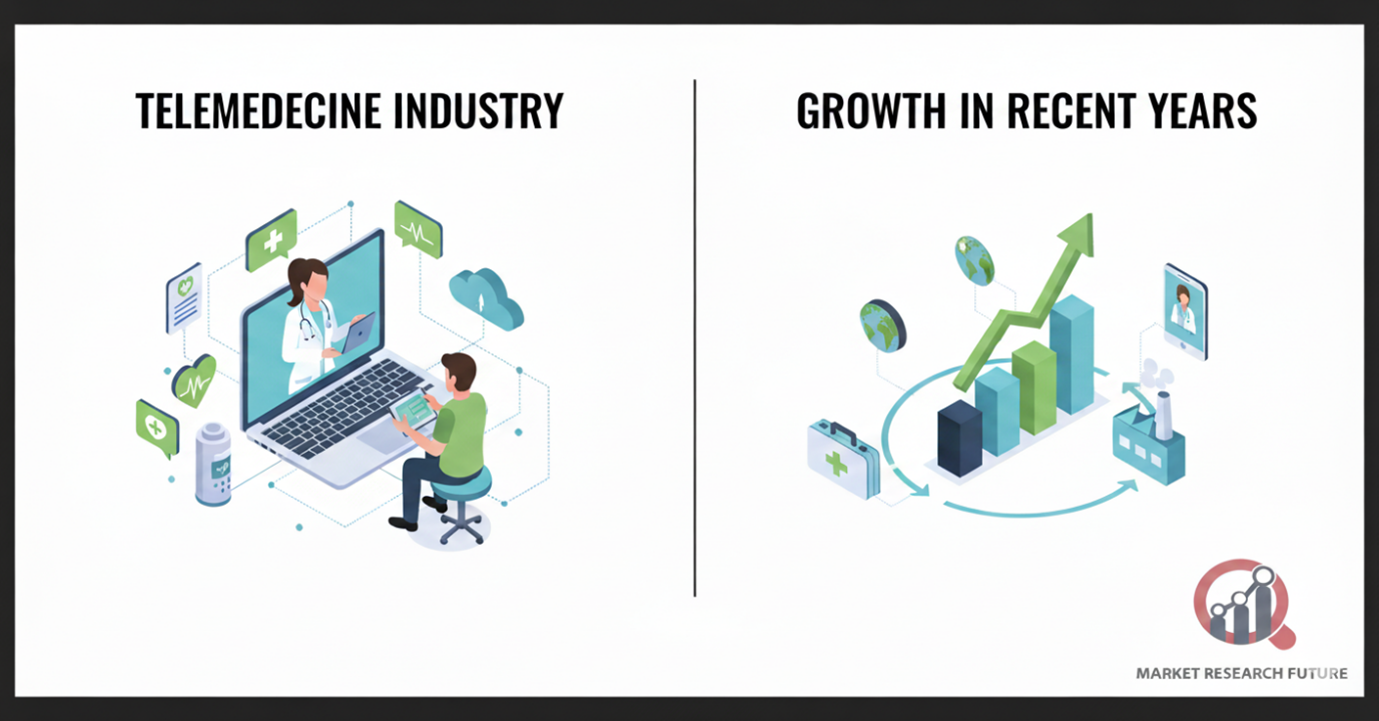Introduction To The Telemedicine Industry And Its Growth In Recent Years

Telemedicine, which is also called telehealth, is changing the way healthcare works by letting patients and doctors talk to each other over the internet. Telemedicine makes it possible to get medical care from almost anywhere by using video calls, mobile apps, and remote monitoring tools. It makes it easier for patients and providers to get good healthcare by closing gaps in geography.
Telemedicine is good for both patients and healthcare providers.
Patients can get healthcare services right away through telemedicine, without having to travel far. It is especially helpful for people who live in rural or underserved areas. Patients can talk to specialists, get follow-up care, and manage long-term conditions—all from the comfort of their own homes.
Telemedicine makes healthcare workers more efficient and lets them help more patients. Digital data tracking makes it possible to keep an eye on patients all the time, make diagnoses faster, and start treatment sooner. Telemedicine also lowers operational costs and increases productivity, which leads to more personalized and proactive healthcare.
Problems and challenges right now
Telemedicine has many great benefits, but there are still some problems. Concerns about data privacy and security, complicated healthcare rules, and inconsistent internet access are still problems. The industry needs to keep putting money into safe platforms, dependable networks, and digital literacy for both patients and healthcare workers if it wants to reach its full potential.
Telemedicine Success Stories
To improve patient care, many hospitals around the world have successfully added telemedicine systems. For example, specialized tele-ICU programs let critical care experts keep an eye on patients from a distance, making sure they get medical help quickly. Telemedicine programs for kids are helping kids in remote areas get advanced care without having to travel far.
The Future of Telemedicine
Telemedicine has a bright future. Telemedicine is likely to become a key part of modern healthcare delivery as artificial intelligence, wearable devices, and cloud-based healthcare systems continue to improve. It will keep changing how patients feel, making healthcare smarter, faster, and more accessible.
In conclusion
Telemedicine is at the cutting edge of new ideas in health care. Even with the problems it faces, its growth and ability to change medical services are clear. Telemedicine will continue to be an important part of making healthcare more accessible and patient-centered as digital health continues to change.

Leave a Comment